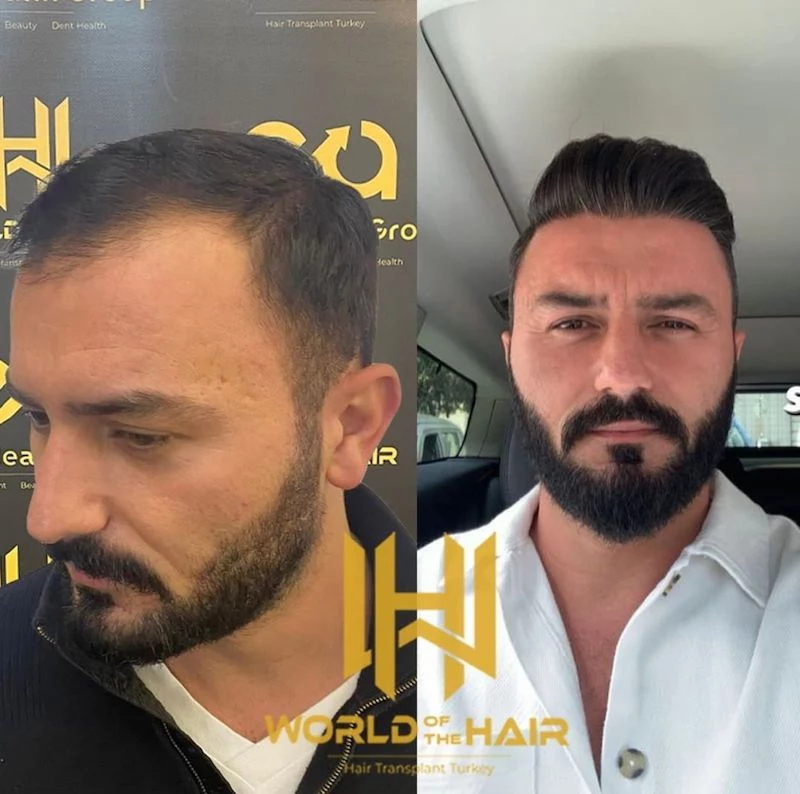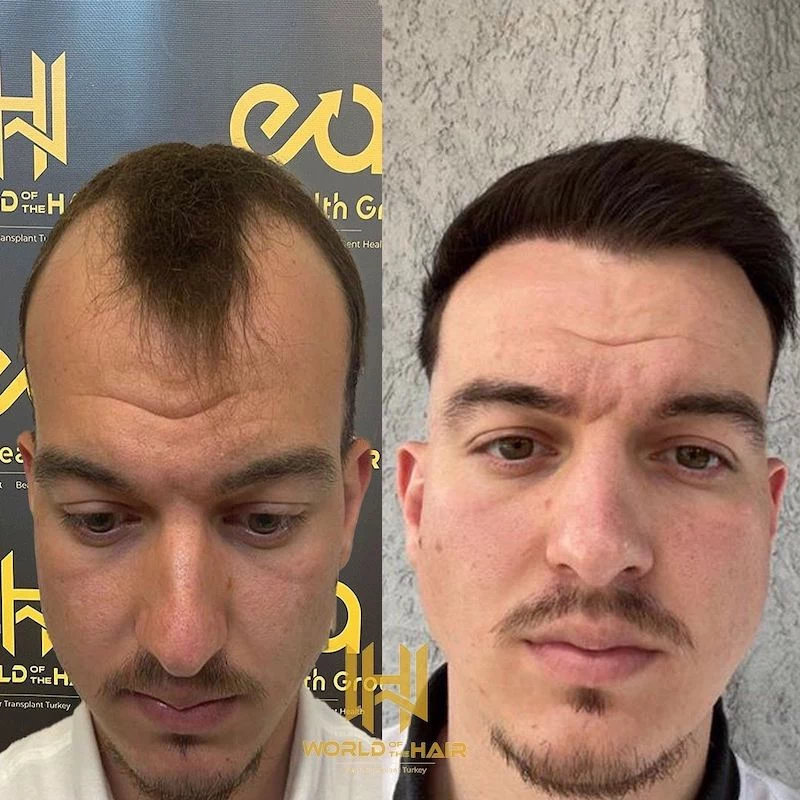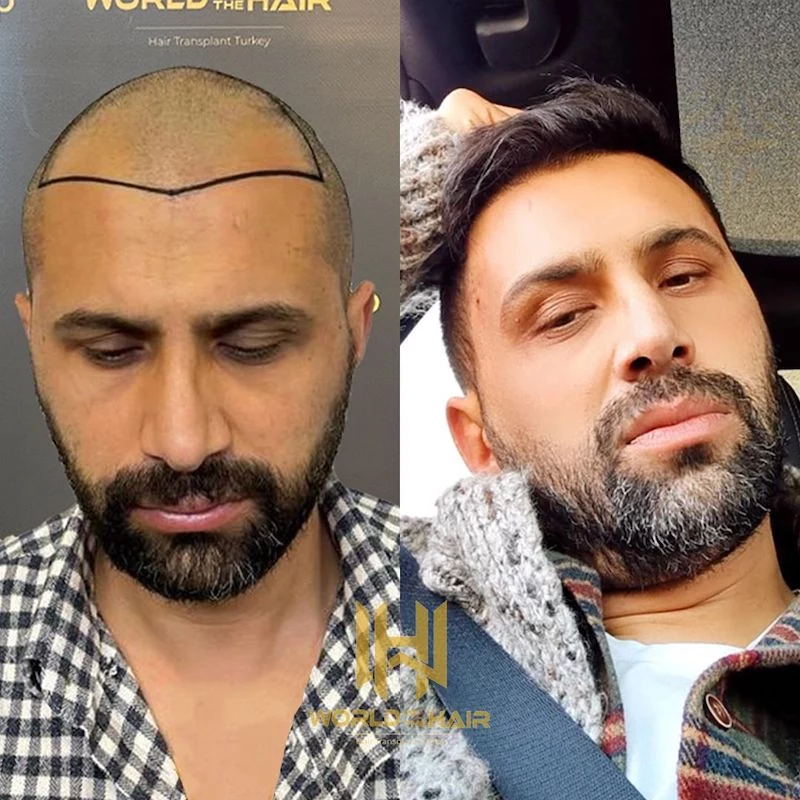The Unfiltered Guide to Choosing a Hair Transplant Clinic in Turkey
I’ve been deep in the world of hair restoration for a long time. I’ve seen the tech evolve from older, rough-around-the-edges methods to the super-refined techniques we have access to today. And through it all, I’ve watched Turkey become this global hub for the craft. It’s pretty amazing, really. You have incredibly skilled teams performing hundreds of procedures every single month, building a level of hands-on experience that’s tough to match anywhere else.
In this article
But let’s be real: with that kind of popularity comes a whole lot of risk. For every top-tier clinic, there are a bunch of others cutting corners. Honestly, it’s the darker side of the industry. I’ve sat down with guys who needed repair work after a bad experience, and their stories are depressingly similar. They got lured in by a rock-bottom price and some flashy marketing, only to end up with lousy results and, even worse, a permanently damaged donor area.

I once consulted a guy who was sold a “5,000 graft mega-session” for a price that seemed too good to be true. And it was. His donor area was wrecked—it looked like a moth had eaten through it—and the new hair on top was thin and unnatural. We had to perform a whole second procedure just to try and fix the damage from the first one. That kind of thing is devastating.
So, this guide isn’t about promoting any single clinic. It’s about arming you with the insider knowledge to tell the good from the bad. I want to show you how to vet a clinic like a pro, looking at the science, the techniques, and the critical questions you absolutely have to ask. This is a permanent medical procedure. Getting it right the first time is everything.
First Things First: Why This Even Works
Before we get into clinics and costs, you need to understand the basic biology. A hair transplant is possible because of a simple genetic quirk. The hair on the back and sides of your head is genetically tough—it’s built to resist the hormone DHT, which is the culprit behind male pattern baldness on the top of your scalp.

When we move these resilient hairs to a new spot, they bring that genetic resistance with them. They’ll keep growing for a lifetime. This is exactly why your donor area is so precious; it’s a limited resource. Any good medical team treats it with the utmost respect.
Oh yeah, and we don’t transplant single hairs. We move them in their natural groups, called follicular units, which usually contain one to four hairs. A skilled technician knows how to extract and implant these units to create a soft, natural-looking hairline. A bad one can damage them or place them at a weird, doll-like angle. Understanding this basic science helps you appreciate why true skill matters so much.
The Main Techniques: FUE vs. DHI
Most modern clinics in Turkey use one of two main methods: FUE or DHI. They’re similar, but the tools and the process are a little different. It’s good to know the basics so you can have an intelligent conversation with a potential clinic.

Follicular Unit Extraction (FUE)
FUE is the workhorse of the industry. It’s a multi-step process that requires a whole team working in sync.
First, the team extracts the follicular units one by one using a micropunch tool. The size of that punch is critical. The best pros use punches between 0.7mm and 0.9mm to minimize scarring. Heads up! Some high-volume, low-cost clinics use larger punches (1.0mm or bigger) because it’s faster, but this can create more visible scarring in the donor area, which you definitely don’t want.
After extraction, the team opens the channels (makes the tiny incisions) in the recipient area, and then the grafts are carefully placed into them. It’s a solid, reliable method.
Direct Hair Implantation (DHI)
DHI is a more refined version of FUE. Instead of pre-making all the channels, the surgeon uses a special pen-like instrument called a Choi Implanter Pen. This tool can open the channel and implant the graft at the same time. This reduces the time the graft spends outside the body and can give the surgeon more precise control over the angle and direction of each hair. It’s a fantastic technique, but it’s often slower and requires a very high level of skill.

So, Which One is Right for You?
There’s no single “best” method; it really depends on your situation.
-
FUE is often the go-to for covering large areas of baldness. Because the process of creating channels and implanting is separate, teams can often transplant a higher number of grafts in a single session. It’s efficient for big jobs.
-
DHI really shines when adding density among existing hairs. The precision of the Choi pen allows the surgeon to work carefully in tighter spaces without damaging the hair that’s already there. It’s also great for creating super-detailed hairlines.
A good clinic will be proficient in both and recommend the one that truly fits your specific hair loss pattern and goals, not just the one they prefer to do.
Let’s Talk Money: What Should This Actually Cost?
Okay, the big question. Why is it cheaper in Turkey, and what’s a fair price? The lower cost is partly due to the country’s economy and lower operational overhead. That part is legitimate. However, an impossibly low price is a massive red flag.

Here’s a realistic breakdown. For a quality procedure where a doctor is genuinely involved in the critical steps (like planning the hairline and making incisions), you should expect to pay somewhere between $2,500 and $4,500. This range typically covers a reputable clinic, a skilled team, and good aftercare.
If you see ads for an “all-inclusive” package for $1,500 or less? Run. To be frank, there’s no way to offer a quality, safe procedure at that price without cutting serious corners. Those corners are usually things like having underqualified technicians do the entire surgery, using cheap and oversized tools, or skimping on sterilization and aftercare.
Your Vetting Playbook: How to Spot the Good from the Bad
Here’s your step-by-step guide to doing your homework properly.
1. Find the REAL Doctor
In Turkey, legally, a medical doctor must perform the incisions (the channel opening part). However, many low-cost clinics have a doctor on paper who never even enters the operating room. The entire procedure is done by technicians. You have to find out who is actually doing the work.

2. Scrutinize Their Before-and-Afters
Don’t just be wowed by their gallery. Look closer. Are the photos high-quality? Is the lighting consistent? Do they show results from multiple angles? Most importantly, do they have photos taken 12+ months after the procedure? That’s when you see the final result.
Lesser-known trick: Reverse image search their gallery photos. If the same pictures pop up on ten different clinic websites, it’s a huge red flag that they’re using stock or stolen images.
3. The Must-Ask Questions Checklist
When you have a consultation (which should be free), have this list ready. Vague answers are a bad sign.
-
“Can I have a live video call with the actual surgeon who will be performing my incisions and designing my hairline, not just a consultant?”
-
“Who, specifically, will be extracting the grafts and implanting them? What are their qualifications and how many years of experience do they have?”
-
“What size punch do you use for FUE extraction?” (Anything over 0.9mm should be questioned).
-
“What is your policy if the results are poor or if I have a low growth rate?”
-
“Can you provide me with contact information for at least 3-4 past patients?”
Quick Red Flags to Watch For
-
High-pressure sales tactics. A good clinic is a medical facility, not a used car dealership. They won’t pressure you to book immediately.
-
Vague answers about the doctor’s role. If they can’t give you a straight answer about the doctor’s involvement, it’s because there isn’t any.
-
A “one-size-fits-all” graft number. They promise 5,000 grafts to everyone without even seeing your donor area. This is a classic bait-and-switch.
-
No long-term photos. They only show photos from 6 months out, before the final density is clear.
Managing Expectations: The Post-Op Timeline
Getting a hair transplant is a marathon, not a sprint. The result you walk out with is not the final look. Here’s what you can generally expect:
-
Week 1: Healing time. You’ll have scabs and redness. Your main job is to follow the aftercare instructions perfectly.
-
Month 1-3: The “shock loss” phase. The newly transplanted hairs will fall out. Don’t panic! This is a completely normal part of the cycle. The follicles are safe beneath the skin.
-
Month 4-6: The exciting part. New, fine hairs will start to sprout. It will look thin at first, but it’s the beginning of the real growth.
-
Month 12-18: The final result. It takes a full year, sometimes even 18 months, for all the hairs to mature, thicken, and show their final density. Patience is key.
At the end of the day, a hair transplant can be a life-changing procedure, and there are truly world-class artists doing this work in Turkey. Your job is to be an educated consumer, to be skeptical, and to put in the effort to find them. Your hair—and your wallet—will thank you for it.










